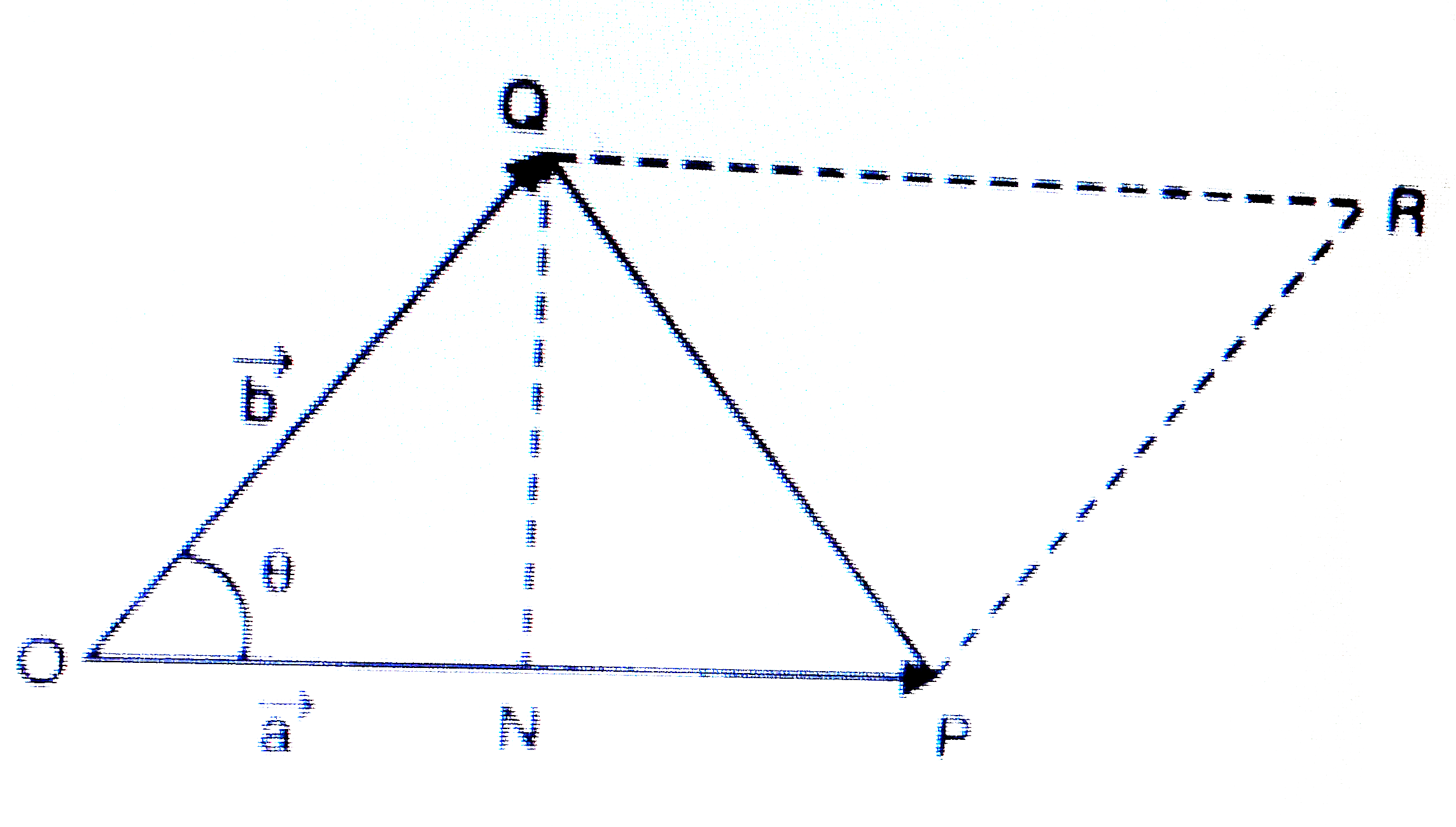Show that the area of the triangle contained between the vector →aand→b is one half of the magnitude of →a×→b
Video Solution
Text Solution
Let →a be represented −−→OP and→b be represented by −−→OQ. Let ∠POQ=θ, Fig. Complete the ||gm OPRQ. Join PQ.
Draw QN⊥OP
IN ΔOQN, sinθ=QNOQ=QNb
QN=bsinθ
Now, by definition , ∣∣→a×→b∣∣=absinθ=(OP)(QN)
=2(OP)(QN)2=2× area of ΔOPQ
∴ area of ΔOPQ=12∣∣→a×→b∣∣, which was to be proved.

|
Updated on:21/07/2023
Topper's Solved these Questions
- BOOK - NCERTCHAPTER - SYSTEMS OF PARTICLES AND ROTATIONAL MOTIONEXERCISE - EXERCISE33videos
SYSTEMS OF PARTICLES AND ROTATIONAL MOTION
- BOOK - NCERTCHAPTER - PHYSICAL WORLD EXERCISE - EXERCISE16videos
PHYSICAL WORLD
- BOOK - NCERTCHAPTER - THERMAL PROPERTIES OF MATTEREXERCISE - EXERCISE22videos
THERMAL PROPERTIES OF MATTER
Similar Questions
Show that the area of the triangle contained between the vector →rand→b is one half of the magnitude of →a×→b
View Solution(i) State the associative and commutative laws of vector addition.
(ii) For two given vectors A=ˆI+2ˆj−3ˆk,→B=2ˆi−ˆj+3ˆk find the vector sum of →A and →B also find the magnitude of (→A+→B)View Solution
Knowledge Check
- Question 1 - Select One
Projection of →P on →Q is :
A→P.ˆQB→P.ˆQC→P׈QD→P׈Q - Question 2 - Select One
The angle between vector (→A−→B) and (→B×→A) is :
A60∘B90∘C120∘D45∘ - Question 3 - Select One
Two vectors →A "and" →B have equal in magnitudes. If magnitudes of →A+→B is equal to n
times the magnitude of →A−→B , then the angle
between →Aand→B is :Acos−1(n+n2n−n2)Bcos−1(n2+1n2−1)Ccos−1(n2−1n2+1)Dcos−1(2+n2−n)
Fill in the blanks :
(i) →τ=→r×… (ii) →L=→r×…View SolutionAre the magnitude and direction of →A−→B same as that →B−→A?
View SolutionLet →C=→A+→B then :
View SolutionThe magnitude of the vector product of two vectors and may be : →A and →B
View SolutionIf →B=n→A and →A is antiparallel with →B, then n is :
View Solution

